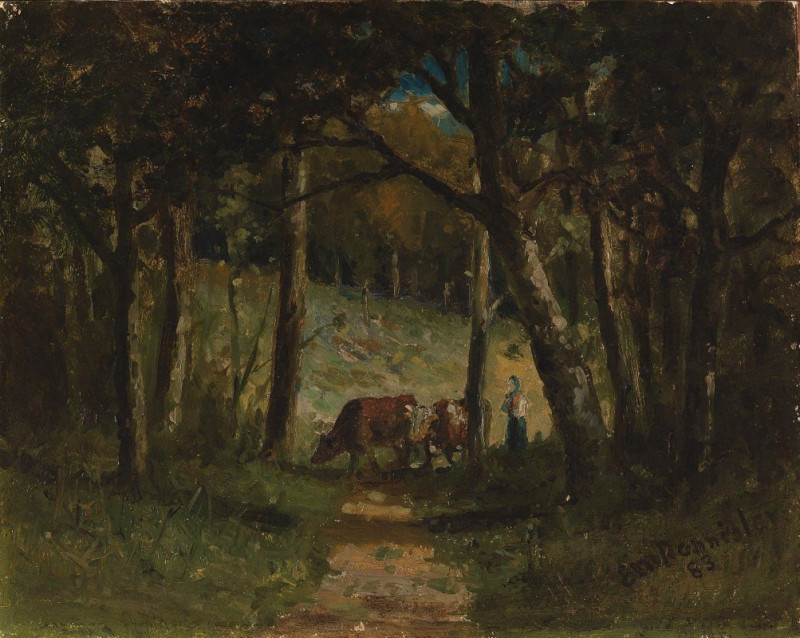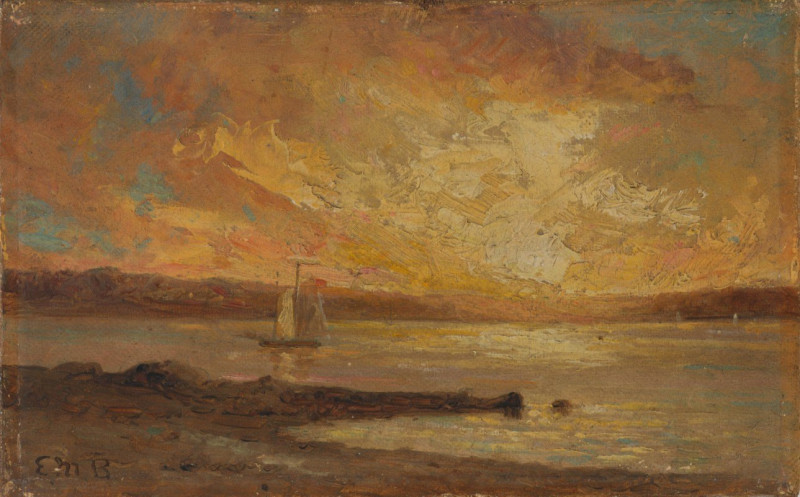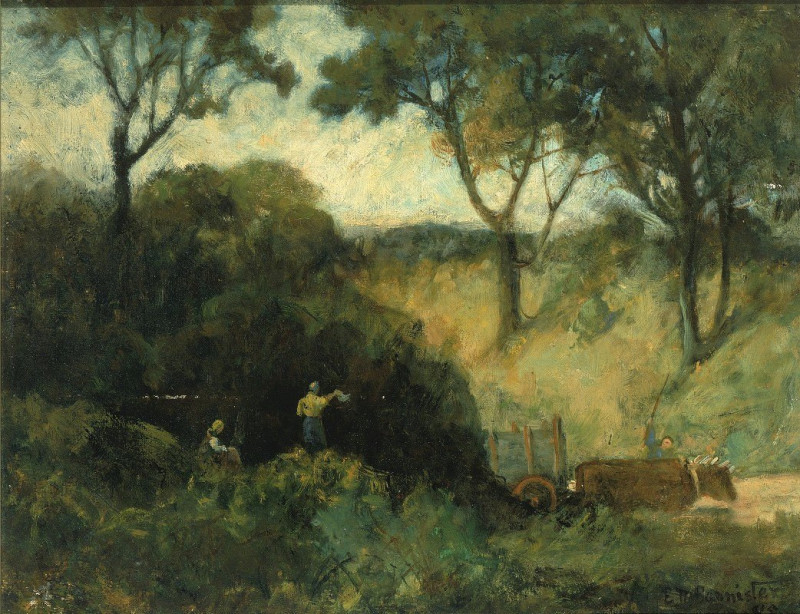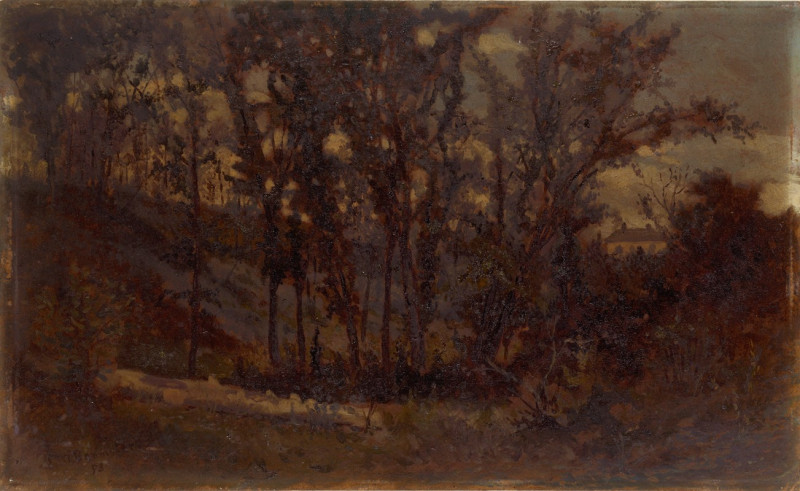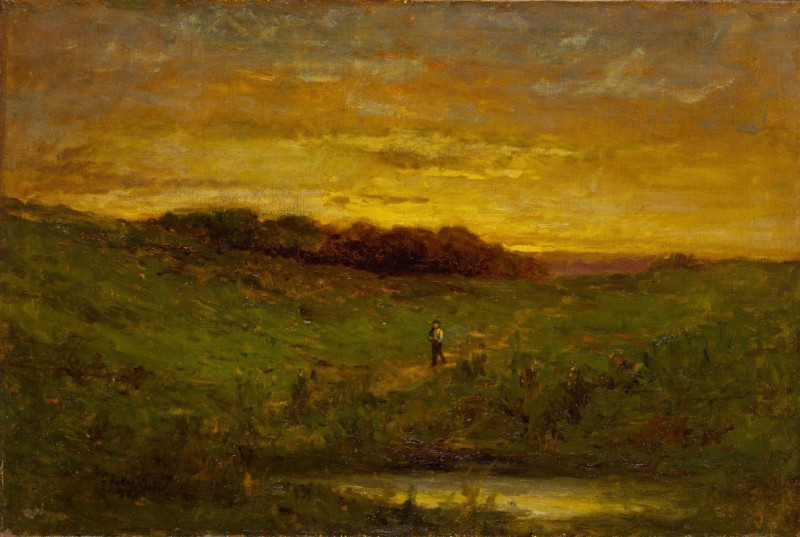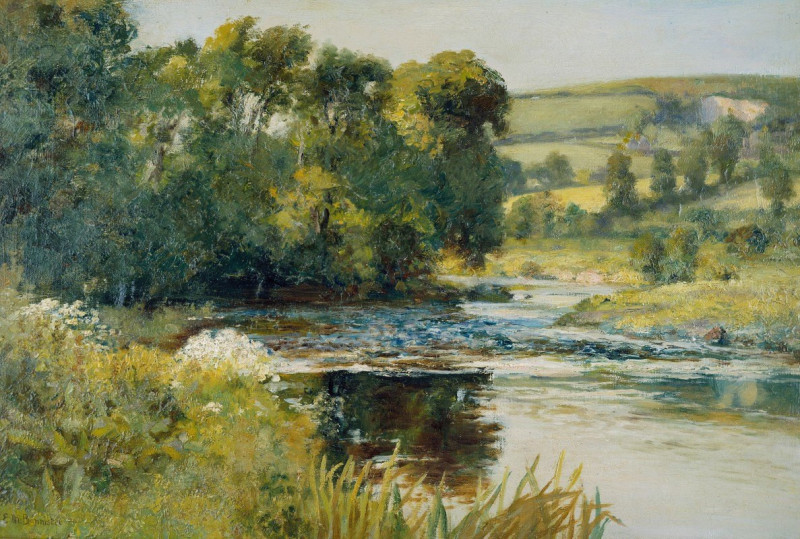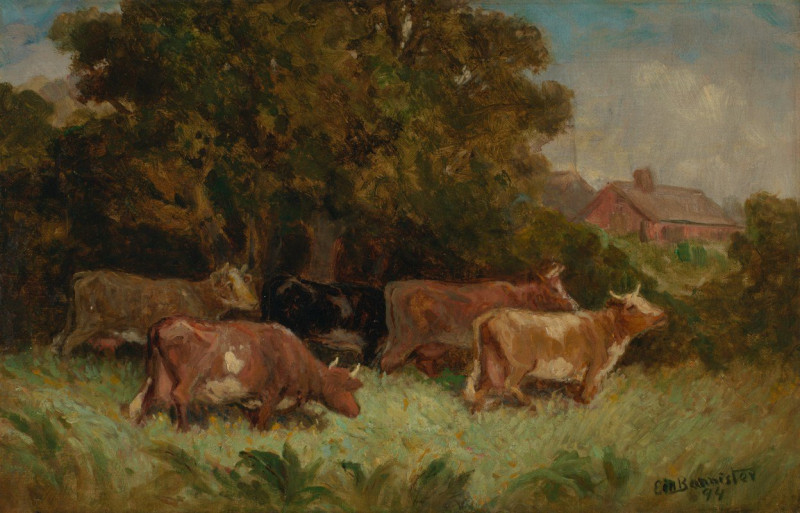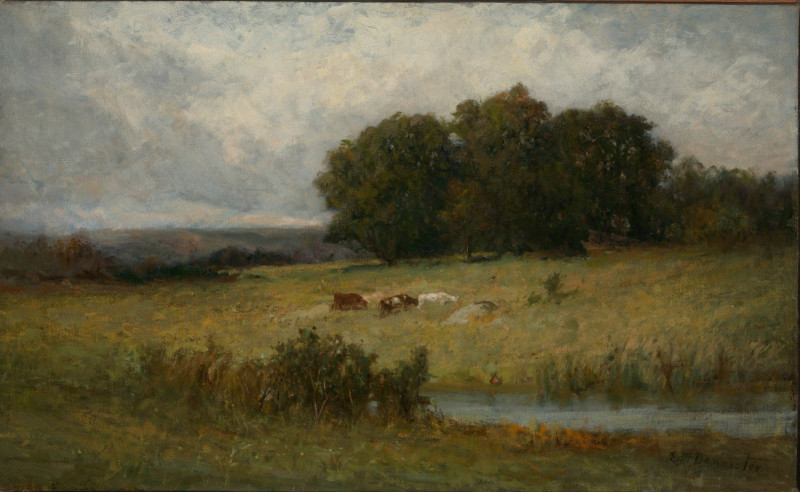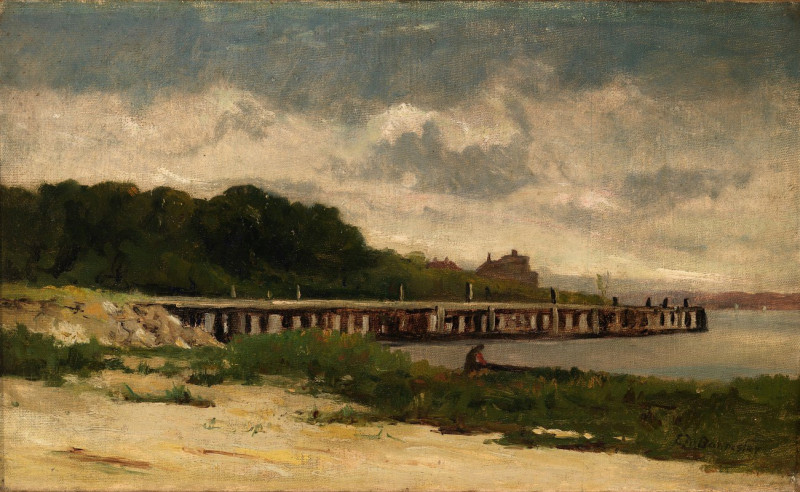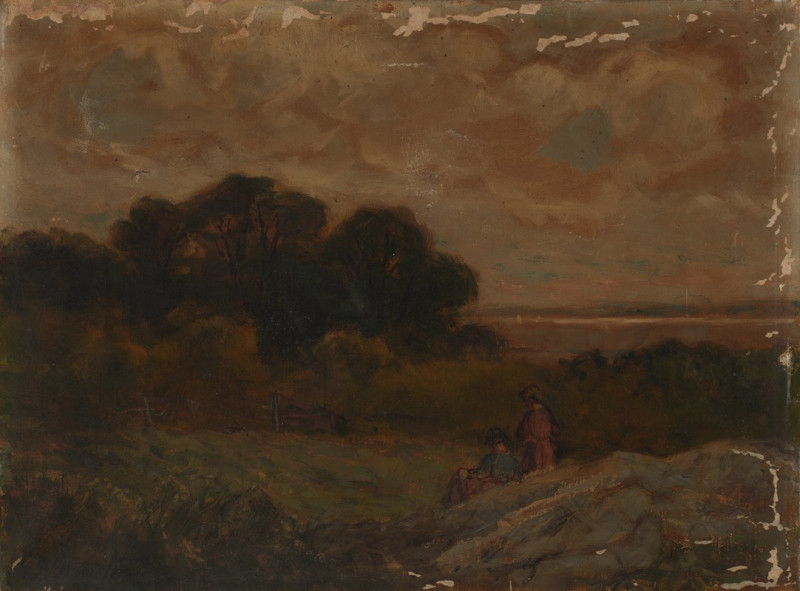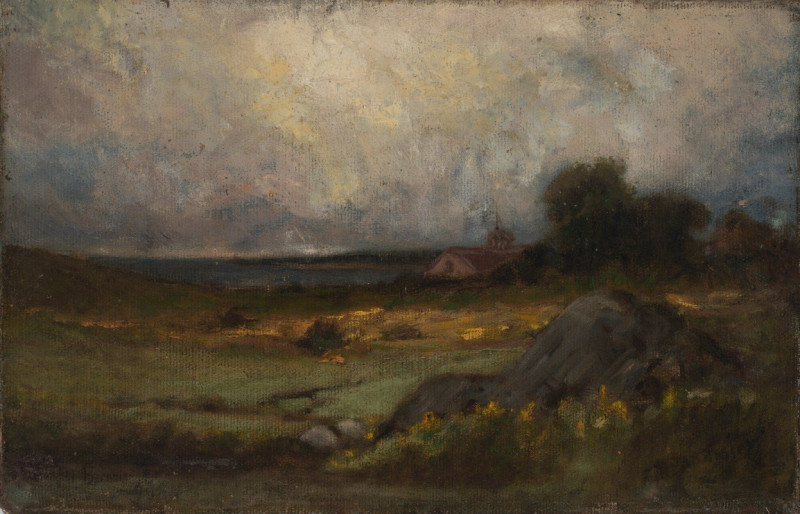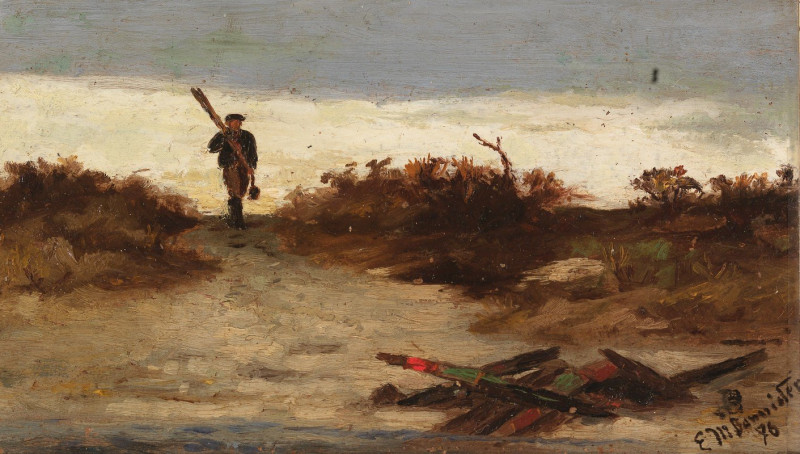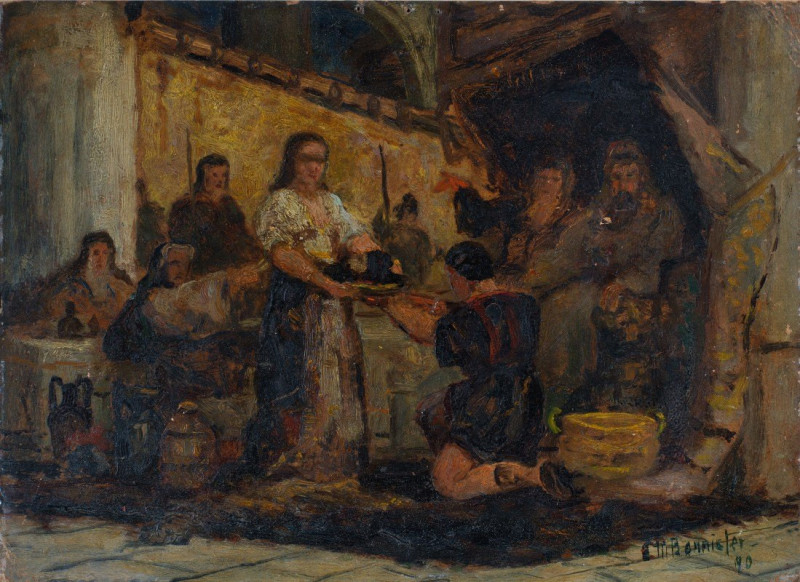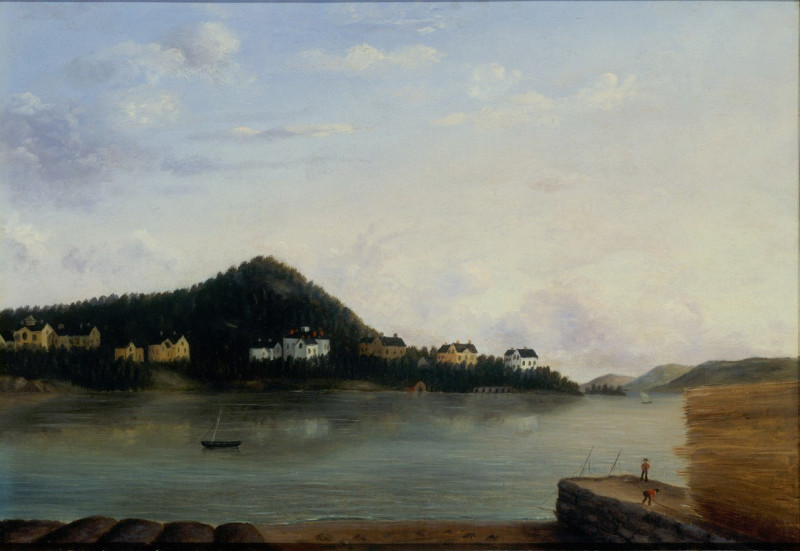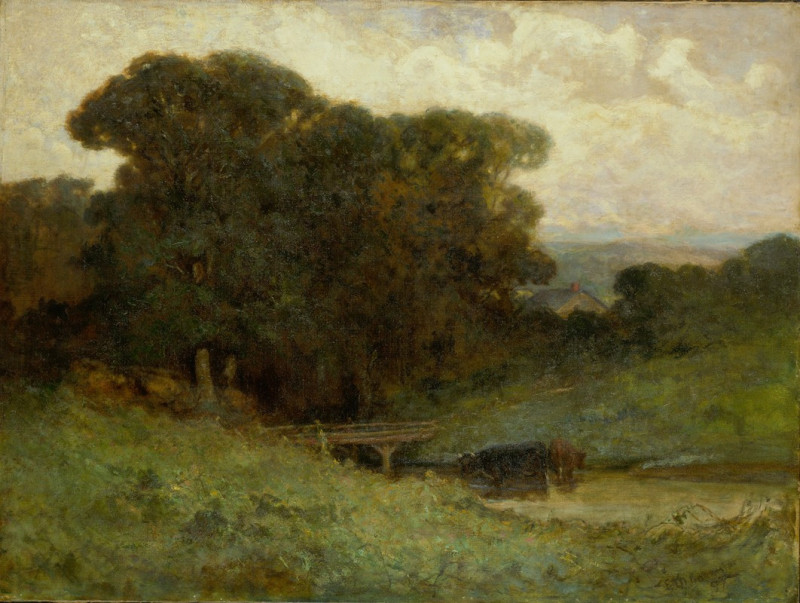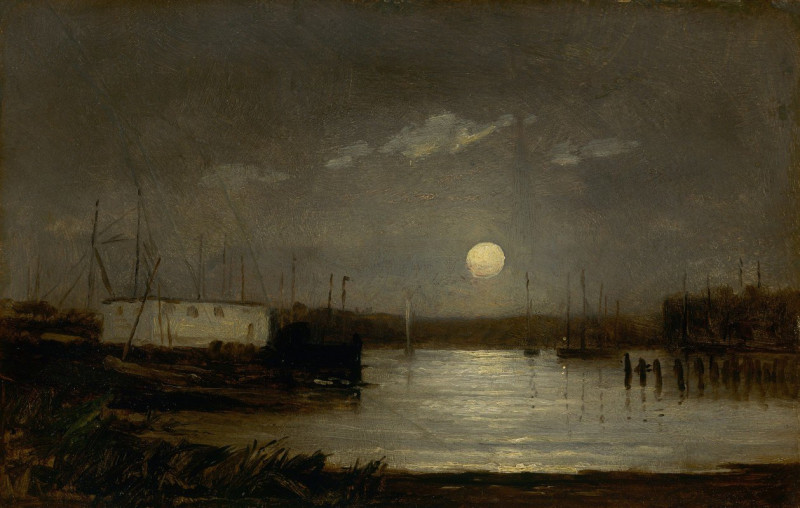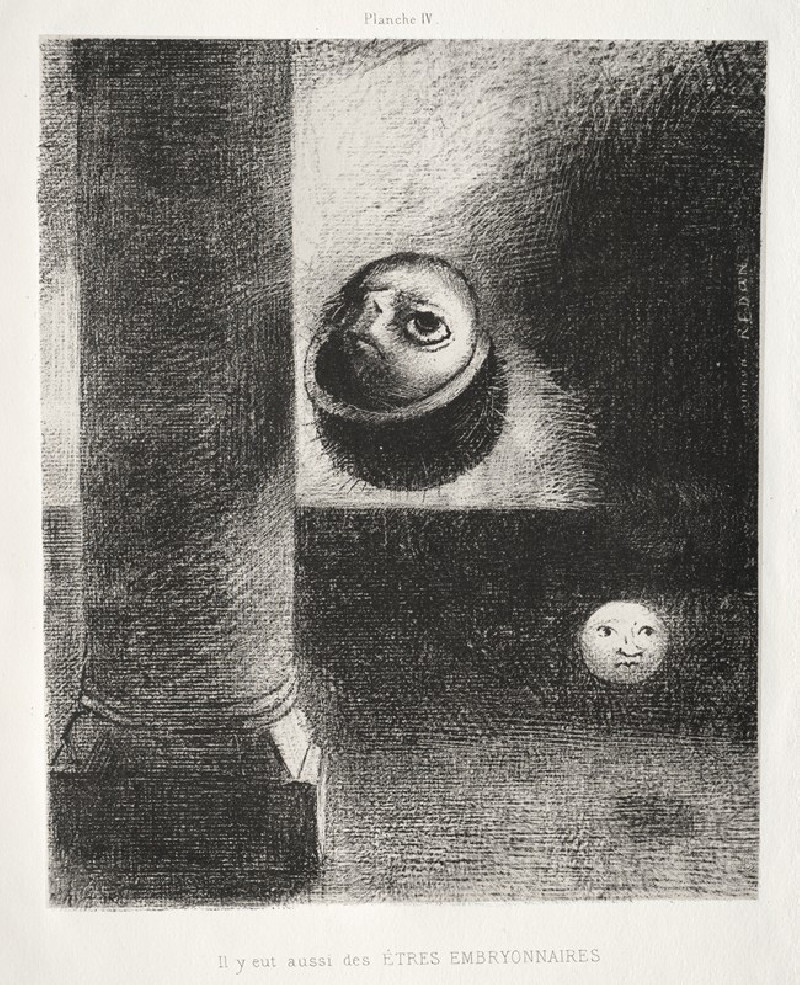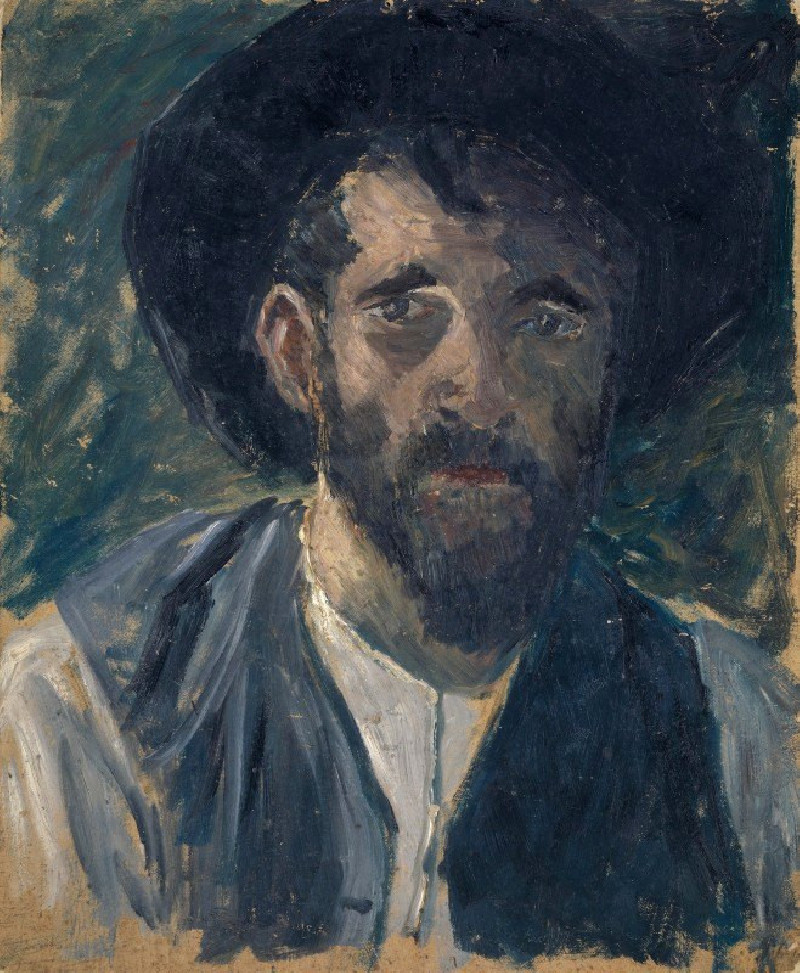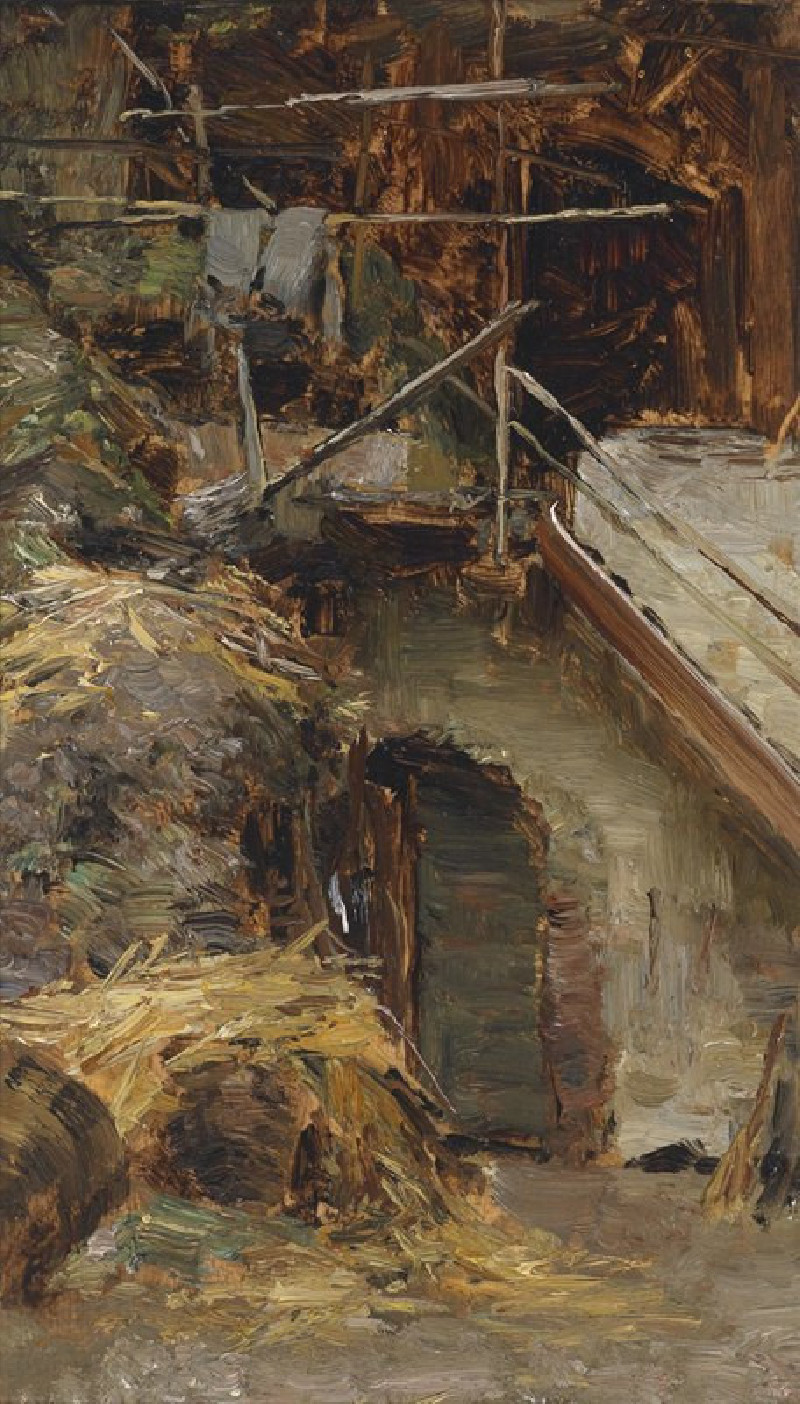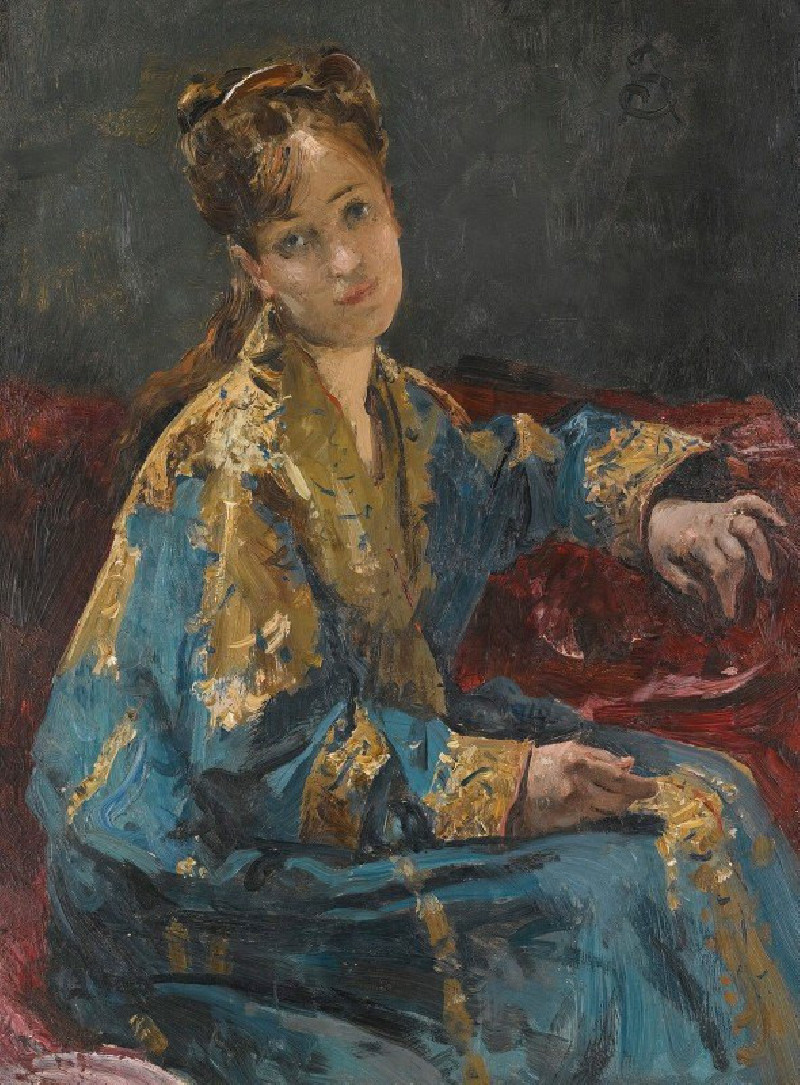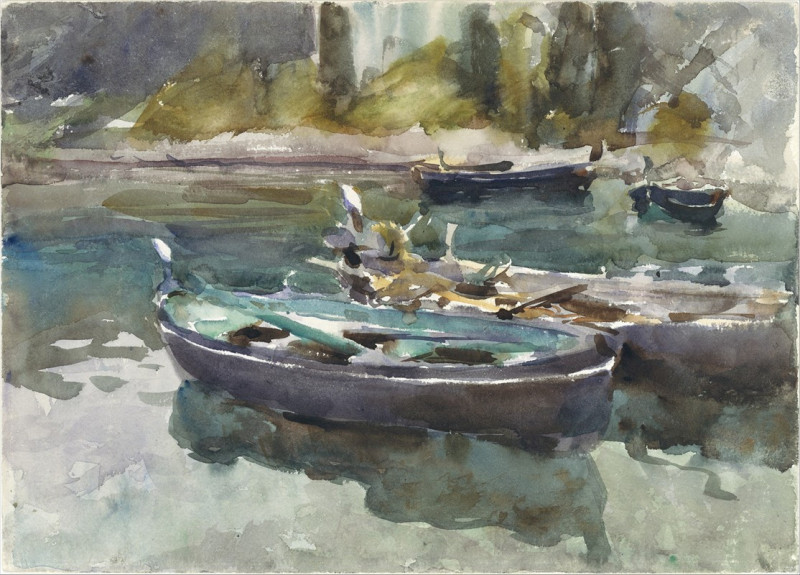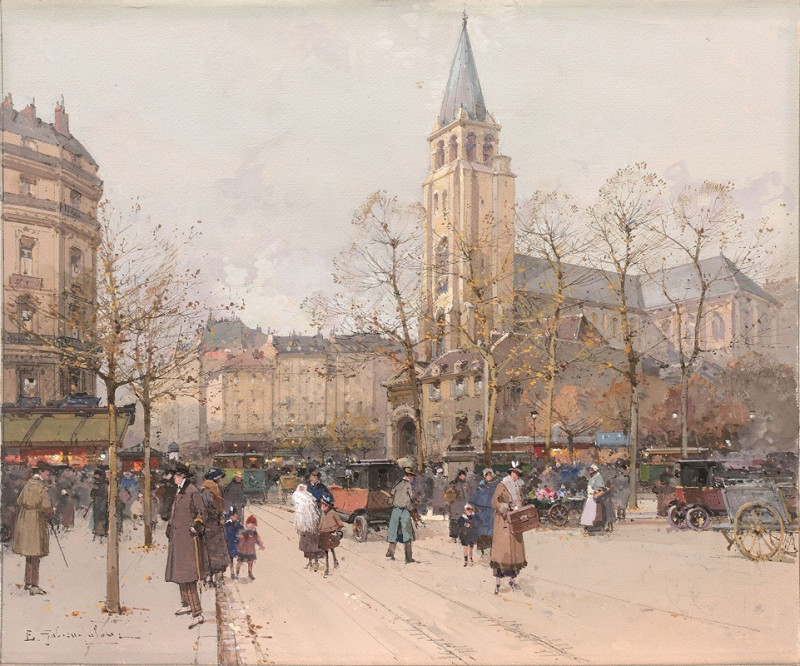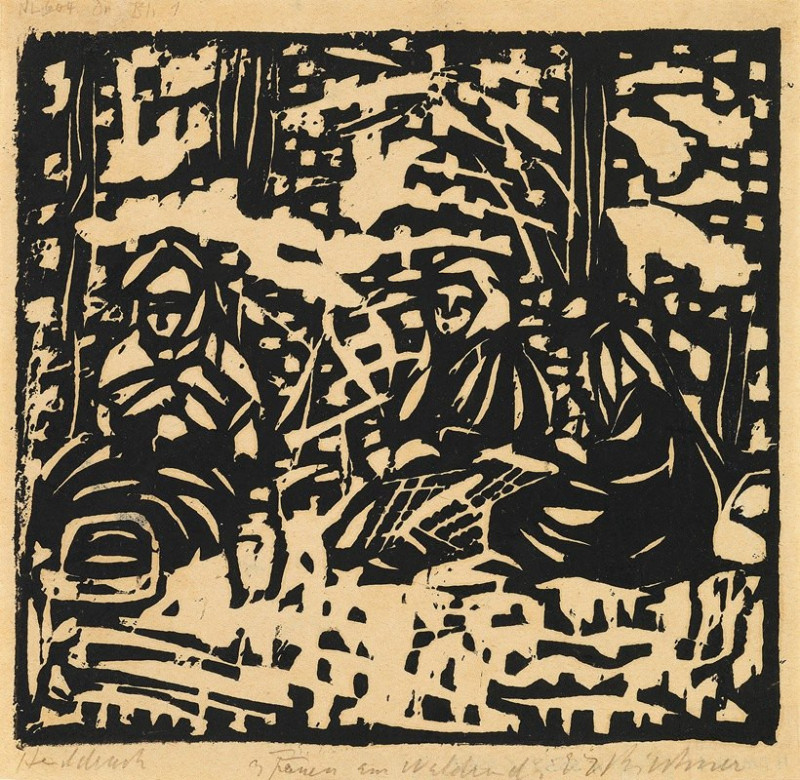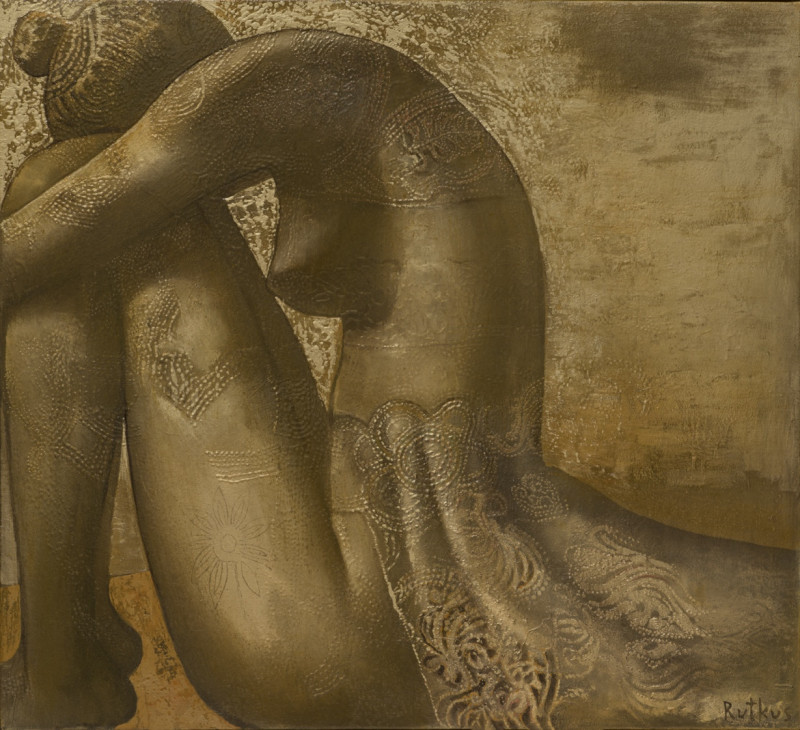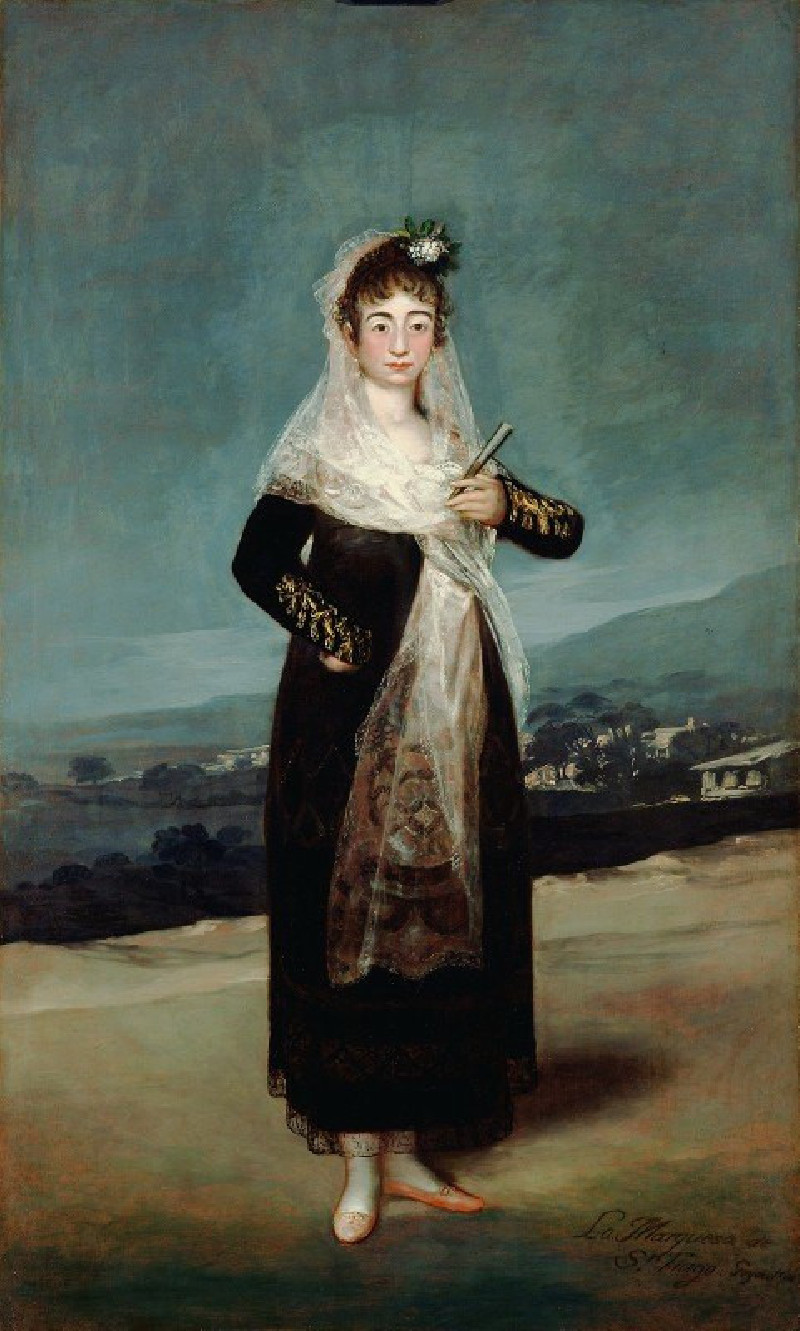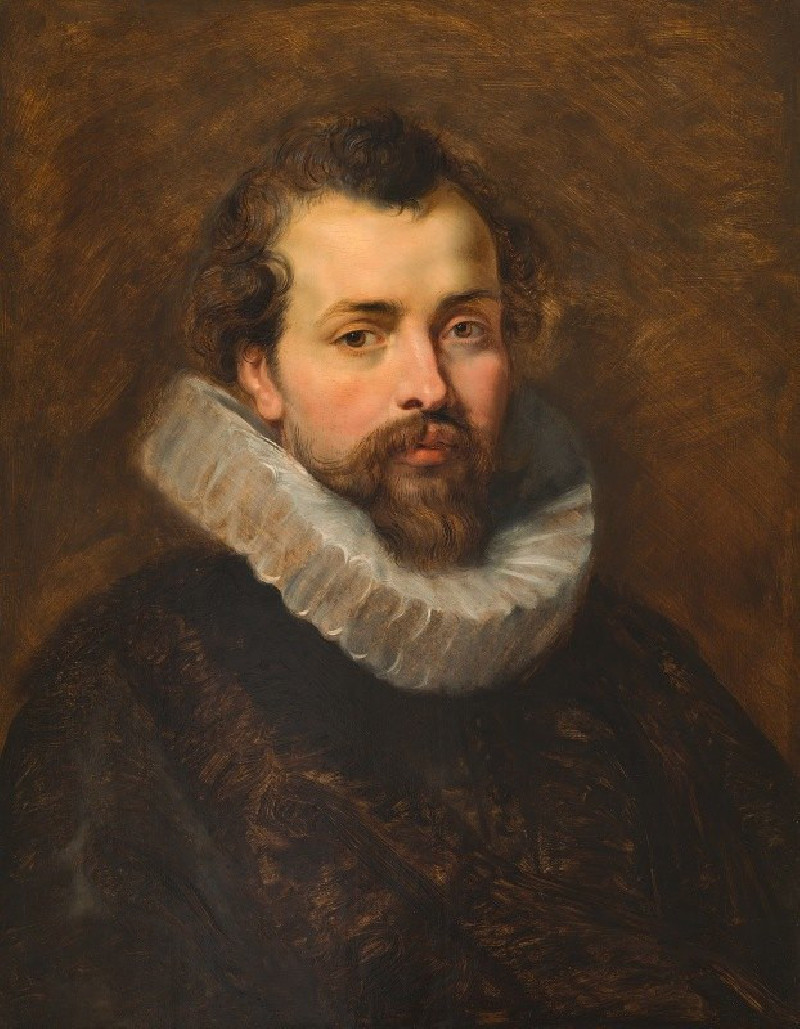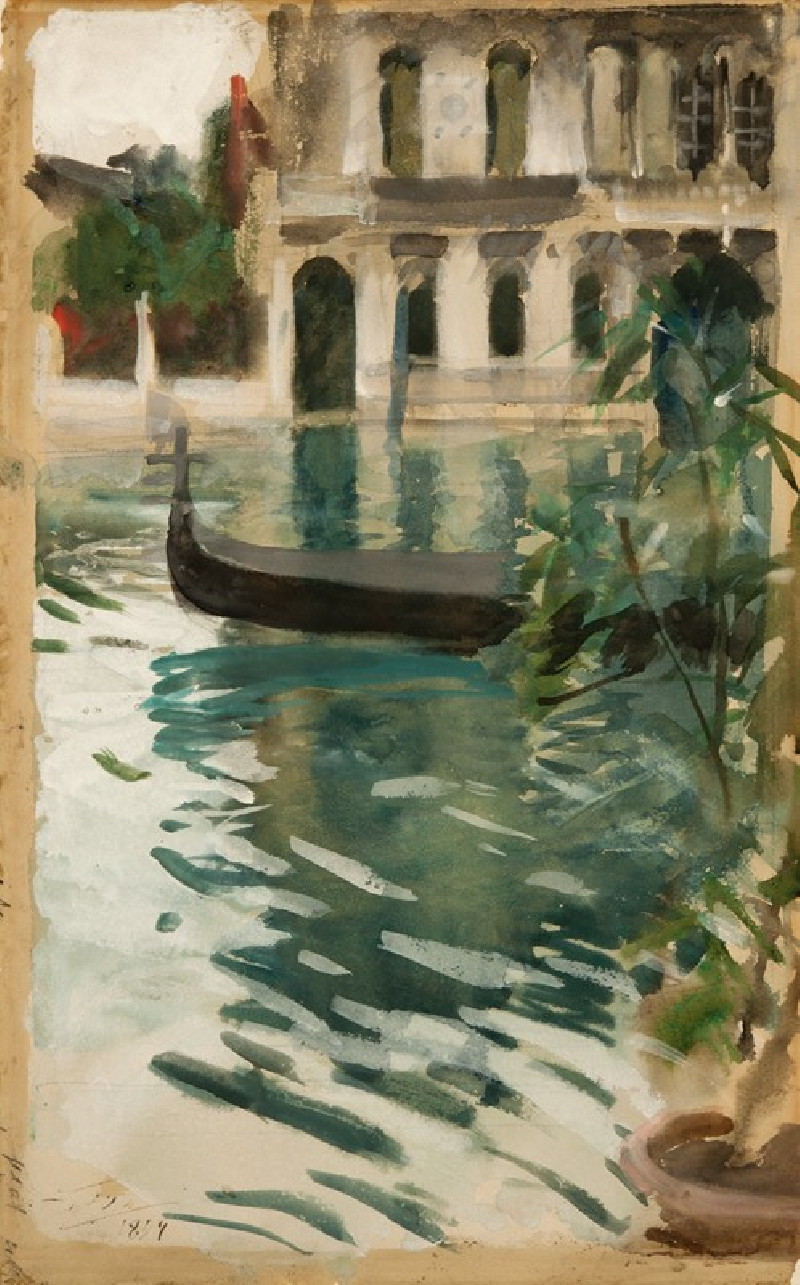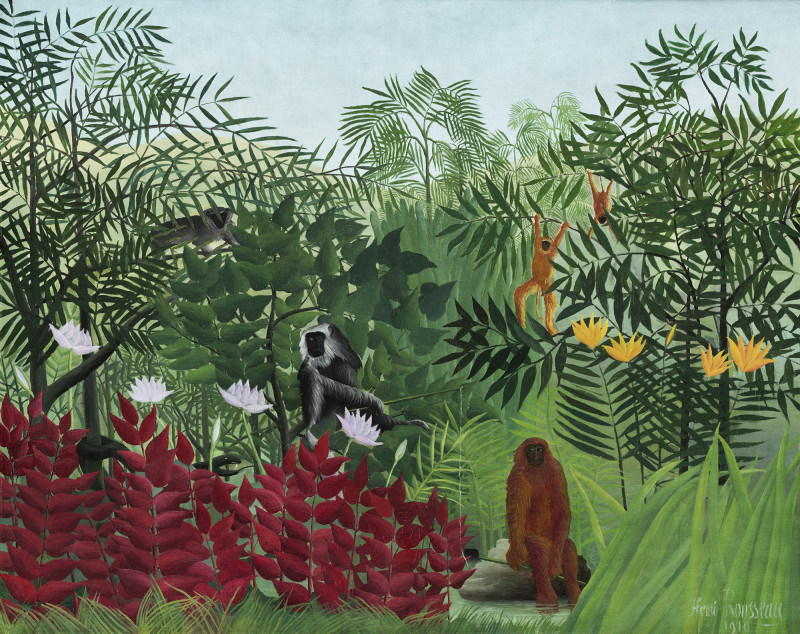Landscape (trees and rocks by lake)
Technique: Giclée quality print
Recommended by our customers
More about this artwork
We are delighted to present "Landscape (trees and rocks by lake)," a poignant work by the renowned artist Edward Mitchell Bannister. In this evocative painting, Bannister captures the serene beauty of a natural setting with his masterful use of color and texture.The scene invites viewers into a calming landscape shaped by a harmony of trees, rocks, and water. A great portion of the focal area is dominated by a cluster of robust trees, their dense foliage depicted in deep greens and rustic browns, which grace the right side of the canvas. This lush arboreal group contrasts beautifully with the airy and expansive sky above, filled with billowing clouds painted in soft whites and pale blues, capturing an ephemeral light that seems to change with each viewing.In the foreground, Bannister introduces a variety of textures with scattered rocks and a small, winding path that draws the eye gently towards the lake visible in the distance. These rough stones juxtaposed against the soft floral brushstrokes in the fields add a tactile dimension to the painting. The distant view of the lake, calm and serene, sits under the expansive sky and invites contemplation.This painting not only showcases Bannister's skill as a painter but also embodies his ability to evoke emotion and tranquility through his art. "Landscape (trees and rocks by lake)" is a testament to Bannister’s dedication to exploring the profound connections between nature and the human spirit.
Delivery
Returns
Edward Mitchell Bannister (November 2, 1828 – January 9, 1901) was an oil painter of the American Barbizon school. Born in Canada, he spent his adult life in New England in the United States. There, along with his wife Christiana Carteaux Bannister, he was a prominent member of African-American cultural and political communities, such as the Boston abolition movement. Bannister received national recognition after he won a first prize in painting at the 1876 Philadelphia Centennial Exhibition. He was also a founding member of the Providence Art Club and the Rhode Island School of Design.


